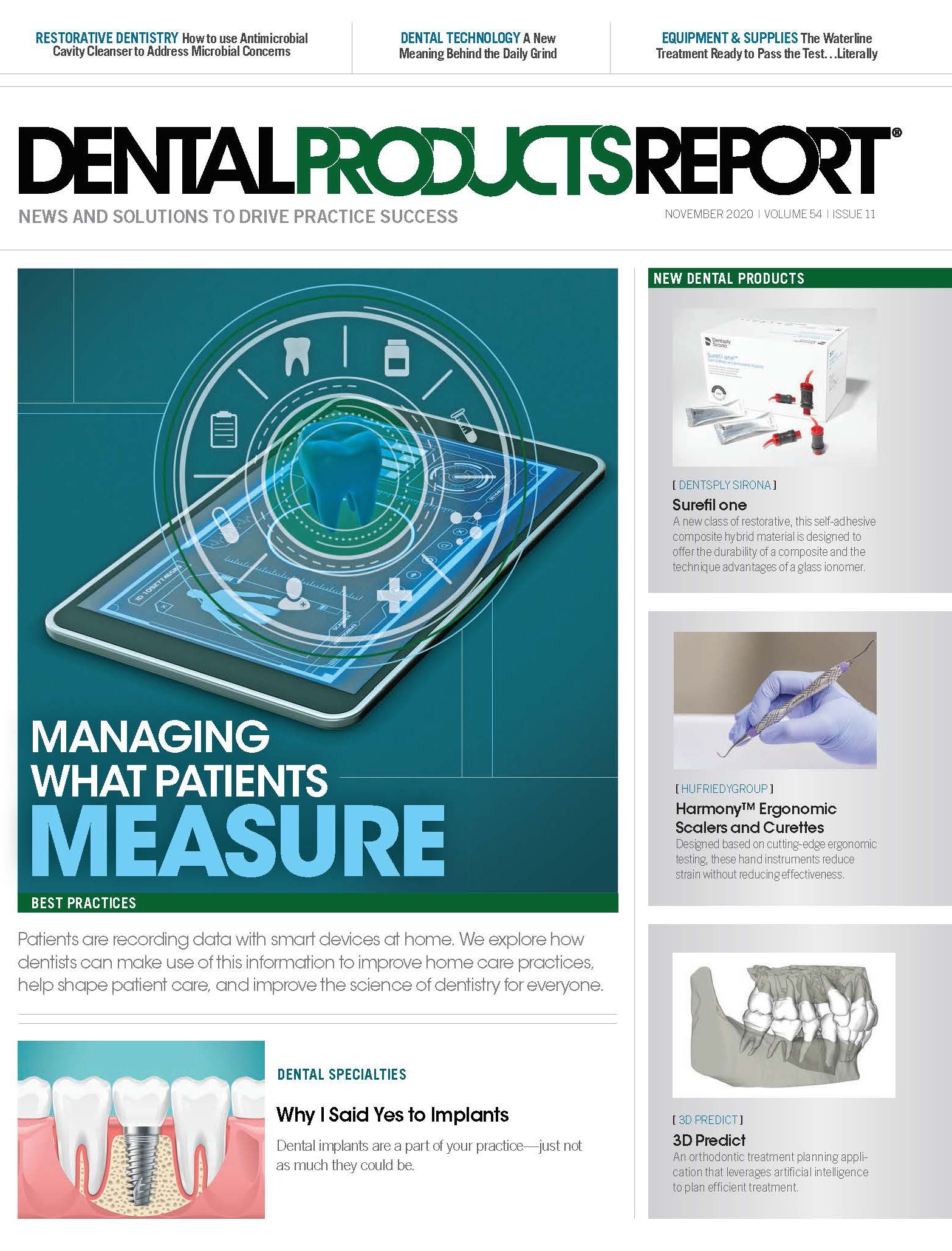It’s an old joke that patients don’t like to visit the dentist. But new milling technologies mean both dentists and patients are saving time by not having to go for a second visit to place restorative elements.
PrograMill® One®
Said to be the smallest 5-axis, smart milling machine, the PrograMill One combines high precision with industrial production quality. The self-contained system does not require any separate filtration or suction units. The PrograMill One can be operated via an app from a tablet or smartphone, while an LED light ring informs users about the current processing status. A camera within the unit captures all data on material and tool usage.
Ivoclar Vivadent
716-691-0010 | ivoclarvivadent.com
A second delivery visit is usually not required for dentists who use PrograMill® One® from Ivoclar Vivident®, a milling chamber that is billed as the smallest, five-axis, smart milling machine. With this chairside milling system, a restoration can usually be prescribed, designed, manufactured, and placed within a 2-hour window.
“Most patients are very excited because it saves them a second visit,” says David M. Juliani, DDS, owner of a family and cosmetic dentistry practice in Rochester Hills, Michigan. “The goal is to have your office as well-versed as possible in technology because your patients understand you’re doing the best for them.”
Dr Juliani was a beta user of the PrograMill One, which was introduced in 2017. Today, he uses it in his own practice and trains others in the technology. He says the mill has addressed many problems with milling systems he has used previously.
“My goal was to resolve some of the issues I’d had with other chairside milling systems, like marginal chipping and anatomical exactness,” he says. “I was looking to solve some problems that other systems didn’t.”
The PrograMill One is unique in that it is a self-contained milling system that does not require separate filtration or suction units. It features a wireless design enabling it to be placed anywhere within a practice, and it can be operated via an app on a tablet or smartphone. Additionally, an LED light ring visually informs the user about the current processing status.
“You can monitor it without having to physically be at the machine babysitting it,” he says.
One of the mill’s primary features is a block that moves around the tool, which improves fit and surface quality and shortens processing time.
“It protects the material and the structural integrity of the crown,” he says. “It’s going to be very good at ensuring that you have a great result.”
An innovative rotary grinding process and 5-axis turn-milling technology (5XT) offer minimal tool wear. A camera integrated within the mill automatically records all data on material and tool use, making material management convenient.
Dr Juliani estimates that about 20% to 25% of dental practices use on-site milling systems. But he believes the PrograMill One will benefit both large and small practices because it frees up dentists’ time and reduces other fixed costs, particularly for crown and bridgework.
If a practice does 40 crowns a month using an outside lab, Dr Juliani estimates that it will require 20 hours of delivery time (based on a 30-minute appointment). According to Clinical Research Associates, those 30 minutes generate no revenue and cost the practice laboratory fees for the crown, about $100 in staff costs, and the cost of disposables and room turn-over.
That adds up and could cost $8000 a month, not considering the lost productivity for a dentist and staff overseeing a patient’s second appointment—which could be an additional $7500 per month in lost revenue.
“Being able to finish a crown in one appointmentcan save 20 hours down the line where you can be more productive, not only from a dental standpoint but from an overhead perspective,” Dr Juliani says. “You’re saving on those overhead costs that go along with those 20 hours when you’re not generating any revenue.”
According to Dr Juliani, he still taps into the expertise of a laboratory for complex cases.
“In certain cases, I still send things to the lab, but I’m sending them digitally, not with analog impressions,” he says. “In certain cases, you’ll need a lab to finalize things, such as an occlusion or a bite problem.”
Dr Juliani says the on-site milling process has helped his interactions with labs. “I have probably a better relationship with the lab than ever because I have the ability to have immediate communication with them right away,” he adds, while the patient is still in-office.
Training a dentist and staff on the system takes about 2 days, Dr Juliani says. Usually, Ivoclar Vivadent would offer the training off-site, but due to SARS-CoV2 virus, other training methods are provided, such as video tutorials and Zoom meetings. Ivoclar Vivadent offers proactive post-sales support through a dedicated customer advocate, and the company also offers software updates as new features are needed.


